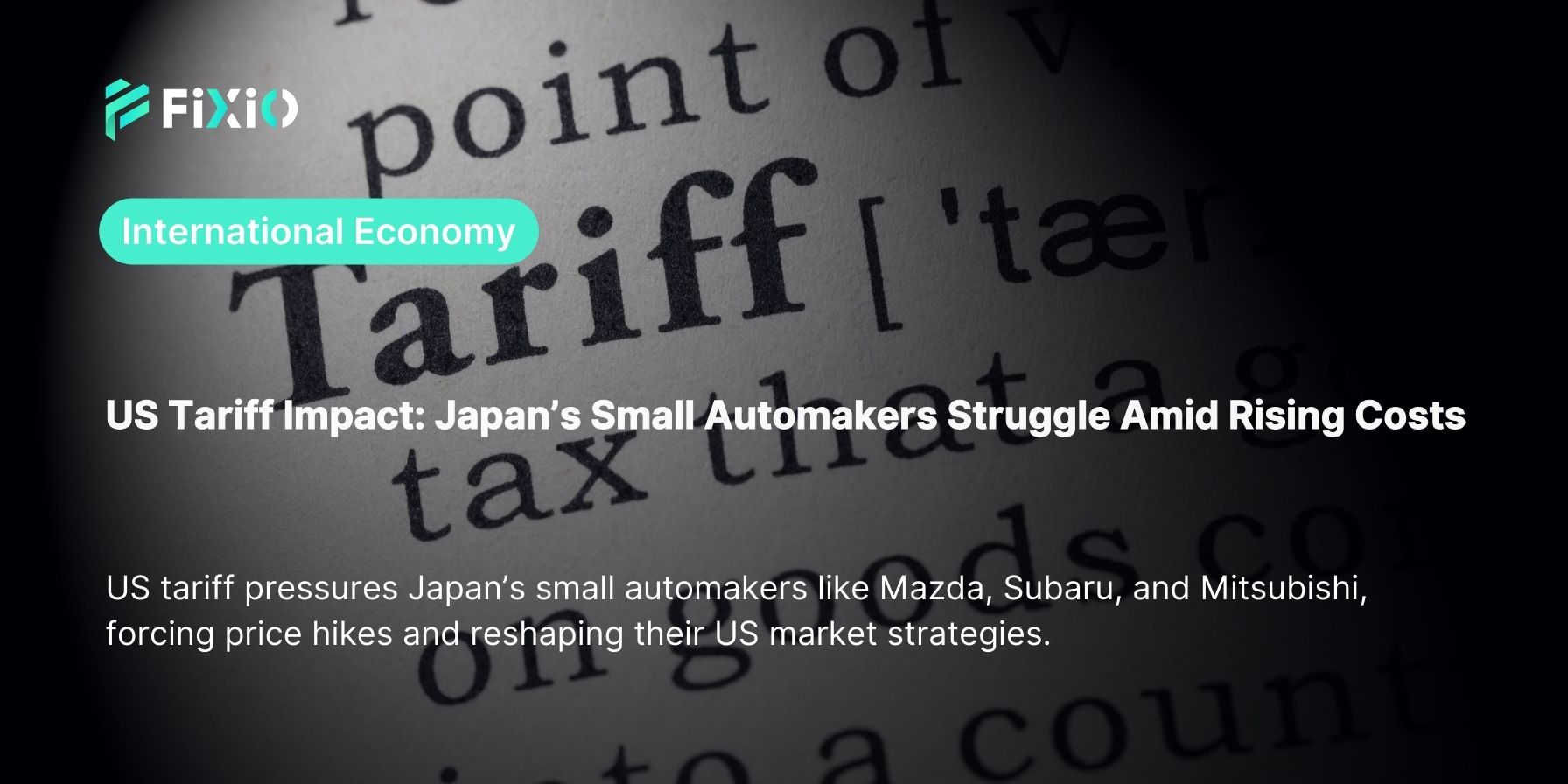
US tariff policies continue to cause serious problems for Japanese automakers, especially smaller players such as Mitsubishi, Mazda, and Subaru. President Donald Trump recently cut the tariff rate, but even the lower rate still leaves these companies struggling in the U.S. market.
The import duties on Japanese cars now stand at 15%, down from 27.5%. However, the rate is still six times higher than the original 2.5% duty before 2025. Larger automakers like Toyota and Honda can offset the cost through local production in North America. Smaller companies such as Mitsubishi, Mazda, and Subaru rely heavily on exports from Japan, so the US tariff hits them much harder. Mitsubishi faces the toughest challenge. Because it has no North American factories, it must ship all of its cars across the Pacific. That raises costs immediately and leaves the company with a difficult choice: either pass the cost to buyers or accept lower profits.
Analysts expect smaller automakers to continue raising sticker prices in response to the tariff. A July survey from CarGurus shows Mitsubishi increased prices by an average of $2,403 per car, while Subaru raised prices by $824. These hikes pressure U.S. buyers, many of whom may switch to used cars to stay within budget. Automakers rarely increase all prices at once. Instead, they adjust gradually. New models usually debut at higher prices than the outgoing versions. For example, Mazda priced the 2026 Mazda3 sedan at $24,550. That is $400 more than the 2025 version and nearly 20% higher than in 2022.
Mitsubishi faces the hardest decisions. The company does not operate plants in North America and cannot avoid the tariff. Its lineup relies on affordable models, which makes price hikes more damaging. If costs climb too high, the company could lose its U.S. market advantage. Analysts even warn Mitsubishi may reduce its presence or pull back specific models.
Mazda has shifted strategy by producing more vehicles locally. It expanded output of the CX-50 crossover SUV at a joint plant with Toyota in Alabama. This move lowers reliance on exports from Mexico and Japan, helping protect margins and keeping U.S. sales stable. Still, Mazda’s exports from Mexico to the U.S. dropped 54% in the four months after tariffs began. To preserve profits, Mazda reduced incentives and shifted its focus to local production. The company hopes stronger cooperation with Toyota will secure long-term resilience.
Subaru eliminated the base version of its Outback in the U.S. and raised prices on other models. Loyal customers continue to support the brand, but higher costs may eventually force Subaru to change its lineup. The company remains under pressure to adapt quickly.
Consumers feel the pain of the tariff as much as automakers. Inflation already pushes new car prices higher. The extra tariff costs limit affordability even further. Many buyers now prefer used cars when new ones stretch their budgets too far. This trend reshapes the U.S. auto market. Demand grows in the second-hand sector while new car sales slow. Shoppers looking for a $30,000 crossover, such as the Mazda CX-30 or Mitsubishi Outlander, often settle for a three-year-old used vehicle instead.
The tariff encourages Japanese automakers to work together. Mitsubishi has discussed possible collaboration with Nissan to explore North American production. Mazda is expected to deepen its partnership with Toyota, with speculation that Toyota may raise its stake in Mazda within two years. These alliances could help share costs, strengthen supply chains, and reduce the risks caused by U.S. trade barriers.
The U.S. tariff also affects supply chains beyond Japan. Vehicles made in Mexico and Canada may face duties depending on their non-U.S. content. Under the USMCA, cars are taxed only on non-U.S. parts. Even so, complex rules create uncertainty and raise costs for automakers. Japanese brands respond by shifting more production inside the U.S. Mazda’s move to cut Mexico shipments and focus on Alabama output shows how strategies change under tariff pressure.
The cut from 27.5% to 15% offers short-term relief, but the long-term challenge remains. The tariff is still far higher than the historic 2.5% duty. Automakers must rethink their U.S. strategies. Smaller firms without local plants face the biggest risks. Mitsubishi, Mazda, and Subaru must choose between expanding alliances, building new U.S. factories, or shrinking their American operations. Without major changes, they may continue to lose ground in the most important global auto market.
The U.S. market remains vital for Japanese automakers, but the current US tariff creates heavy obstacles. Large players like Toyota and Honda adapt more easily. Smaller firms must take bold steps to survive. As tariffs and trade policies shape the auto industry, companies and consumers alike will need to adjust strategies for a tougher market environment.
Stay informed with the latest Forex trading news and analysis. Visit our website now at: https://fixiomarkets.com/en/prex-blogs
US tariff pressures Japan’s small automakers like Mazda, Subaru, and Mitsubishi, forcing price hikes and reshaping their US market strategies.
Superior trade execution & trading conditions with the NDD method.

The online FX industry provides a platform for investors worldwide to engage in the buying and selling.

Subscribe to our daily newsletter and get the best forex trading information and markets status updates
Trade within minutes!
Comment (0)